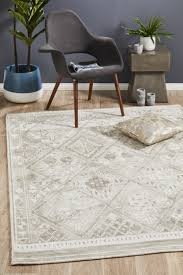Antique fireplaces are more than mere heating devices; they are symbols of history, craftsmanship, and beauty that have stood the test of time. However, as with many antique elements in the home, striking the right balance between aesthetics and functionality can be challenging.
This blend of form and function has long been at the heart of British interior design, especially when it comes to antique fireplaces. As more people seek to add character to their homes, integrating such pieces effectively means understanding the historical context and design principles behind them. Let’s explore the intricacies of balancing the functional and aesthetic qualities of antique fireplaces, and how homeowners can create a harmonious space that respects the past while meeting present-day needs.
Thornhill Galleries, a respected name in the world of antique fireplaces in London, emphasizes the delicate balance required when incorporating these pieces into contemporary homes. A spokesperson from them suggests, “The beauty of an antique fireplace lies in its historical integrity and craftsmanship. However, making it functional in today’s environment requires thoughtful adaptation. It’s essential to respect the fireplace’s design origins while ensuring it aligns with modern safety and heating standards.”
The Historical Appeal of Antique Fireplaces
Antique fireplaces, especially those found in historic homes or those curated by establishments such as Thornhill Galleries, are steeped in rich history. They represent distinct eras of British architectural and decorative art, from the intricately carved marble mantelpieces of the Georgian era to the simple yet stately designs of Victorian cast iron fireplaces. Each piece has its own story, often reflecting the social, cultural, and artistic sensibilities of its time.
The appeal of these fireplaces goes beyond aesthetics. For many homeowners, they embody a sense of continuity with the past—a tangible connection to history that few other elements in a home can offer. In a world where much of what we own is mass-produced, the unique, handcrafted quality of antique fireplaces adds value and personality to any room.
However, these fireplaces were built with different heating needs in mind. Centuries ago, fireplaces served as the primary source of warmth in a home, designed to emit heat efficiently and sometimes even cook food. Today, heating systems have evolved, and fireplaces are often secondary sources of warmth, or even entirely decorative. Thus, integrating antique fireplaces requires a thoughtful approach that preserves their aesthetic value while adapting them for contemporary needs.
Functionality Challenges and Modern Solutions
One of the main challenges when incorporating antique fireplaces into a modern home is adapting them to function safely and efficiently. Unlike contemporary heating systems, antique fireplaces were not designed with modern fuel sources or emissions standards in mind. This can present issues in homes that rely on eco-friendly heating solutions or have strict building regulations.
For instance, many antique fireplaces were originally fueled by wood or coal, which may not align with today’s cleaner energy preferences. Although wood-burning fireplaces are still popular, particularly for the ambiance they create, there are now restrictions in many urban areas (including parts of London) on their use due to air quality concerns. To address this, specialists in antique fireplaces can install gas or electric inserts that mimic the appearance of a traditional fire while meeting current environmental standards. This allows homeowners to enjoy the ambiance and aesthetic of a historical fireplace without compromising on practicality.
It’s also important to consider ventilation and chimney functionality. Many older fireplaces have narrow chimneys designed for open fires, which may not support the flues required for modern gas or electric systems. Fortunately, there are retrofitting options available that enable antique fireplaces to work with updated flue technology, ensuring that they meet current safety codes without altering their appearance.
Preserving Aesthetic Integrity
While functionality is a crucial consideration, the true charm of an antique fireplace lies in its aesthetic appeal. These pieces often serve as focal points within a room, capturing the attention of guests and residents alike. Preserving their original character is essential to maintaining this visual impact.
Choosing the right location and design context for an antique fireplace is crucial. For example, an ornate Rococo-style fireplace might look out of place in a minimalist, modern room, but it could bring an opulent touch to a classically designed space. The key is to create a balanced look that allows the fireplace to shine without overshadowing other elements in the room.
When incorporating an antique fireplace, it’s essential to consider the surrounding materials and décor. Some designers recommend incorporating period-appropriate colors, textures, and furnishings to create a cohesive look. For instance, a Victorian cast-iron fireplace pairs beautifully with dark wood paneling, rich fabrics, and traditional furniture, lending warmth and sophistication to the room. However, even in a more contemporary setting, an antique fireplace can serve as an eye-catching contrast, provided the surrounding design is kept clean and uncluttered.
Modern Styling Around Antique Fireplaces
With the increasing popularity of open-plan living, antique fireplaces are finding new homes in spaces beyond traditional parlors and drawing rooms. They are being creatively incorporated into kitchens, dining areas, and even bedrooms. The adaptability of these fireplaces to different settings is a testament to their timeless appeal, but it requires a considered approach to styling.
For those incorporating antique fireplaces in more modern settings, balance is crucial. A minimalist, neutral palette can allow the intricate details of an antique fireplace to become the room’s focal point without overwhelming the space. Alternatively, contrasting contemporary art or furniture with a traditional fireplace can create an appealing juxtaposition, drawing attention to both old and new elements.
Another modern approach to styling antique fireplaces involves framing them with natural elements. Adding indoor plants or textured textiles can soften the look, giving the room a cozy, lived-in feel. A careful blend of antique and modern accessories, such as vintage candlesticks paired with sleek metal accents, can add layers of interest around the fireplace, creating a more cohesive aesthetic.
Practical Considerations for Restoring Antique Fireplaces
Restoring an antique fireplace involves a mix of practical and aesthetic considerations. Over time, wear and tear, environmental exposure, and shifts in housing structures can take a toll on these pieces. Homeowners must balance restoration efforts to retain as much of the original craftsmanship as possible while ensuring the fireplace remains safe and functional.
Engaging professionals is often essential in the restoration process, especially for historically significant pieces. Specialists can assess the fireplace’s condition, determine which materials and techniques to use, and ensure that restoration aligns with conservation guidelines. For example, an expert might recommend restoring the fireplace’s stone surround with period-appropriate finishes to match its original look while adding modern reinforcements to prevent future damage.
When it comes to cleaning antique fireplaces, gentleness is key. Overly aggressive cleaning methods can damage delicate materials, stripping away patina or chipping softer stones. Mild, non-abrasive products are recommended to preserve the original character of the fireplace, along with professional guidance on maintenance.
Enhancing Comfort and Warmth
For many, the greatest allure of an antique fireplace is its ability to create a warm, inviting atmosphere. While aesthetics are important, an antique fireplace can still serve its original purpose of bringing warmth and comfort to a home. By choosing suitable fuel options, installing efficient inserts, or adding a fan or heat exchanger, homeowners can make the most of their antique fireplace’s heating capabilities.
Those looking to create a cozy setting may consider arranging seating close to the fireplace, turning it into a natural gathering place within the home. Textiles like woolen throws, plush cushions, and area rugs further enhance the sense of comfort, making the space around an antique fireplace feel warm and welcoming. With this setup, even if the fireplace is used sparingly, it becomes an integral part of the room’s ambiance.
Embracing Sustainability with Antique Fireplaces
There is also a strong sustainability argument for integrating antique fireplaces into modern homes. Repurposing and restoring antique fireplaces aligns with eco-conscious values by reducing the demand for new materials and preserving historical pieces. This commitment to sustainability is part of a broader trend in interior design that values longevity and quality over disposable, short-lived items.
Furthermore, antique fireplaces offer a unique opportunity for homeowners to create an environment that doesn’t rely on excessive heating or artificial elements. By incorporating these pieces alongside modern heating controls, it’s possible to manage energy use more efficiently, relying on the fireplace for ambiance and supplementary warmth without the need for constant use.
Antique Fireplaces: A Lasting Legacy
In the end, antique fireplaces are much more than functional heating sources or decorative focal points. They represent a legacy of craftsmanship, an embodiment of British heritage, and a testament to the enduring appeal of thoughtful design. When incorporated into contemporary homes with care and respect, these pieces bring a sense of character and history that enriches the living experience.
From the choice of materials and restoration techniques to thoughtful styling and sustainable considerations, there is a delicate balance in bringing an antique fireplace into a modern setting. It’s a process that requires knowledge, respect for history, and a desire to create a harmonious living space that combines the best of old and new.
Brit is a passionate writer with a love for storytelling and exploring the depth of human experience through words. With a keen eye for detail and a thoughtful voice, Brit crafts pieces that resonate with readers and spark meaningful reflection. When not writing, Brit enjoys quiet moments with a good book, long walks, and finding inspiration in everyday life.





